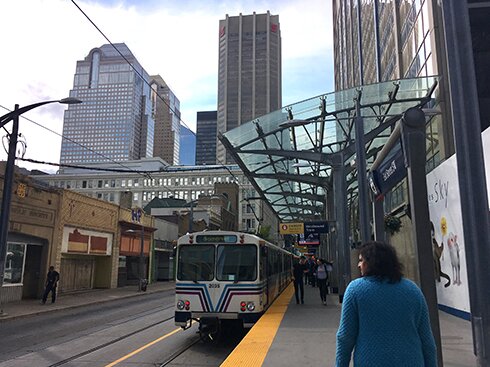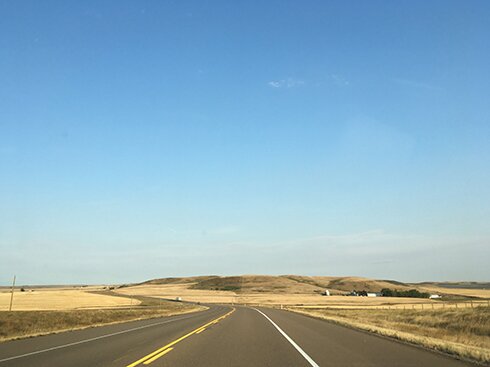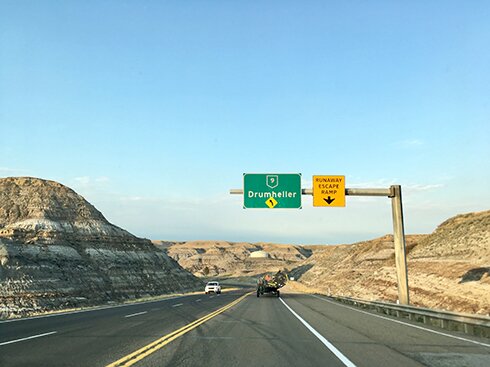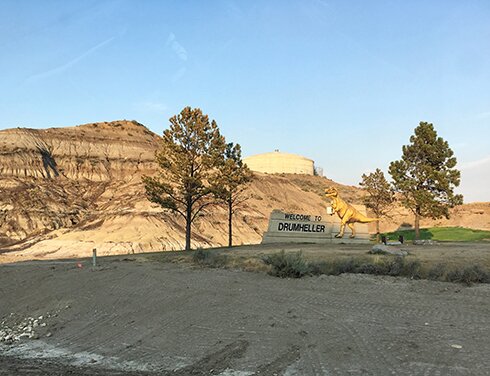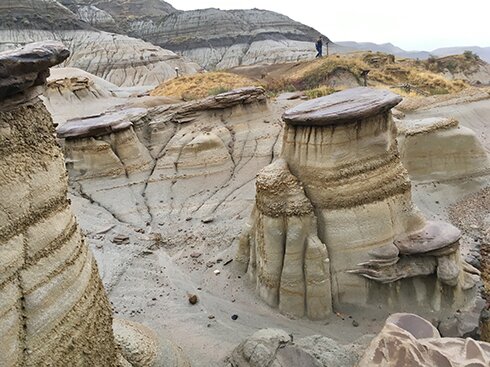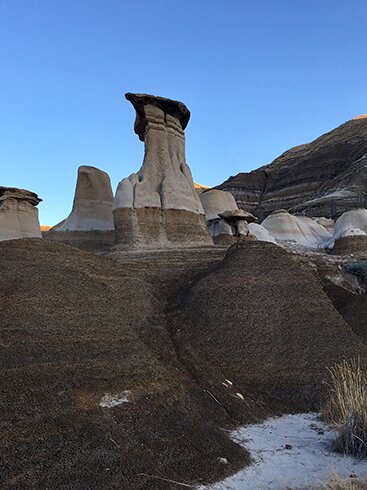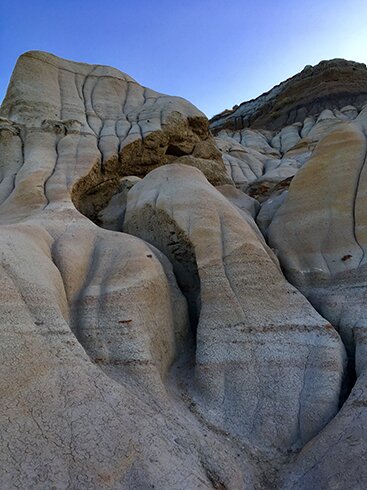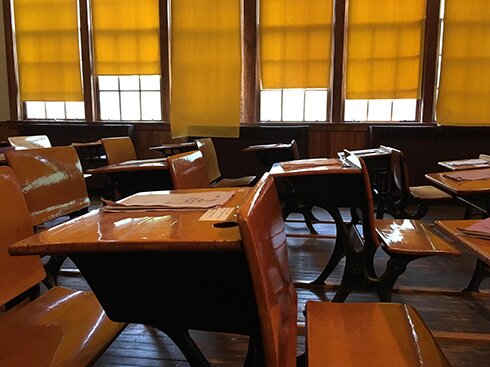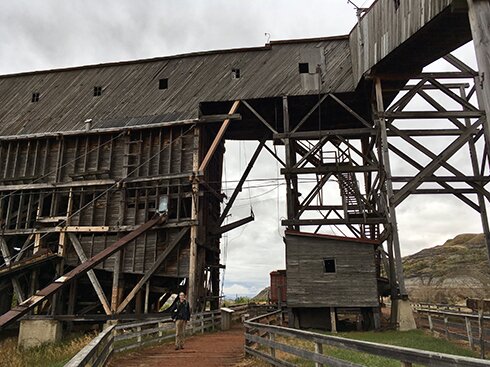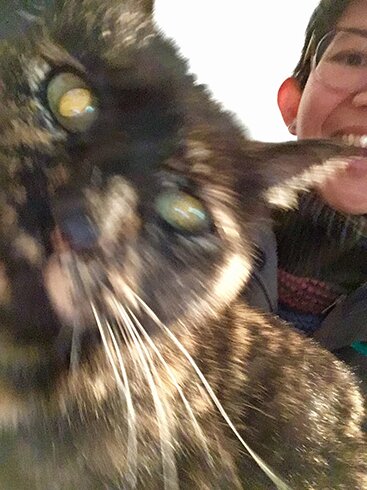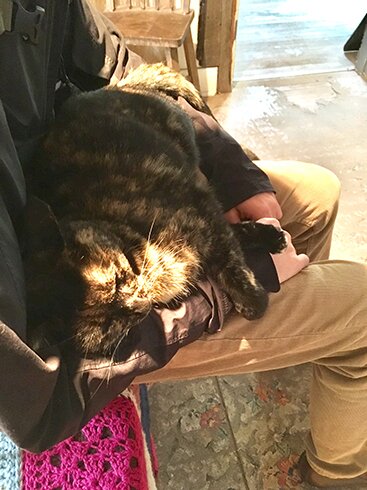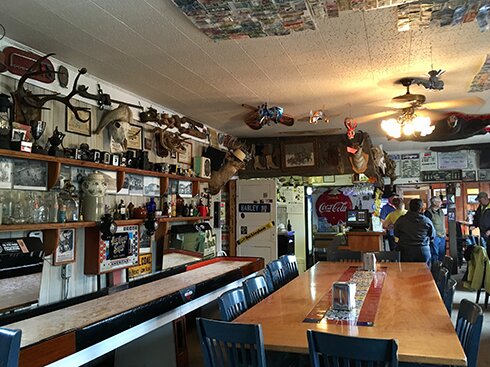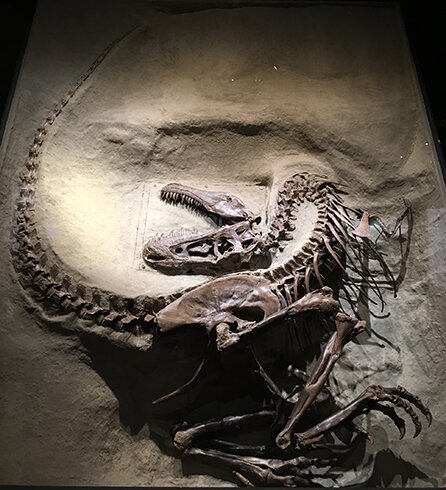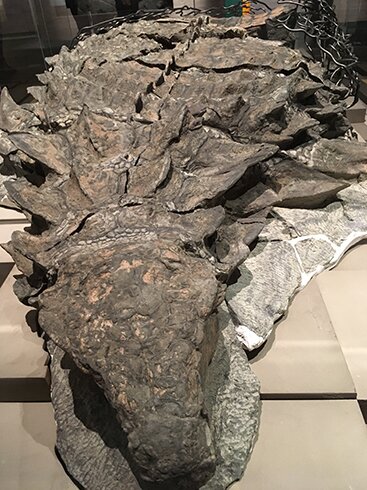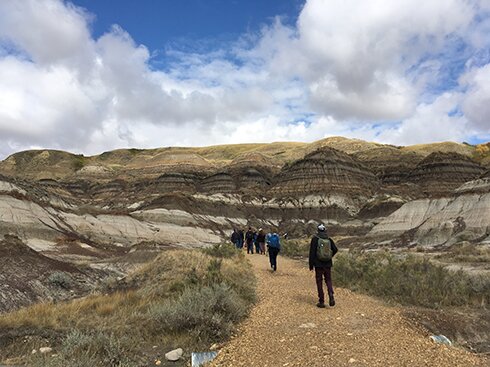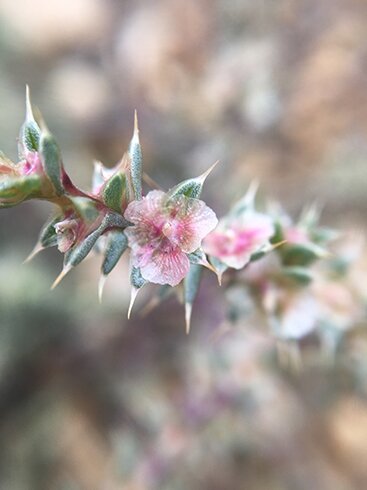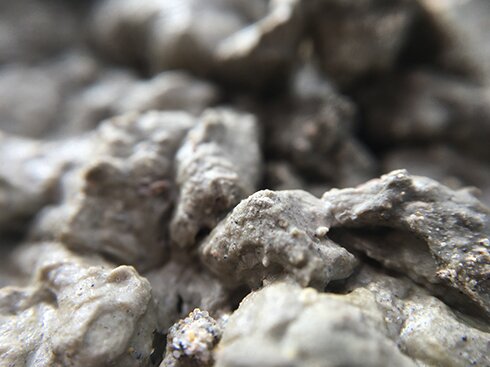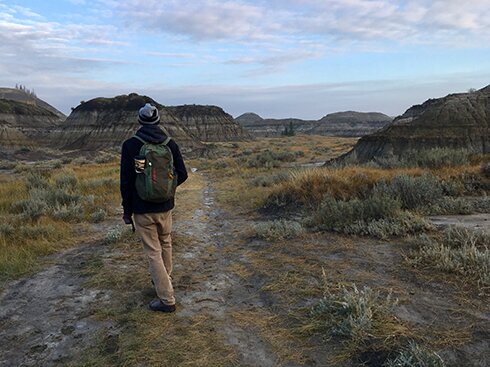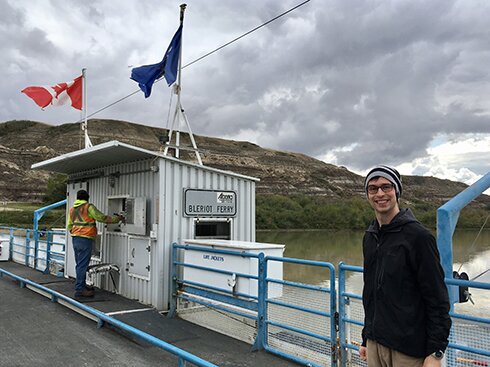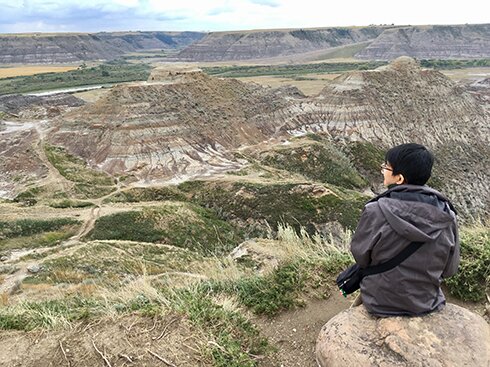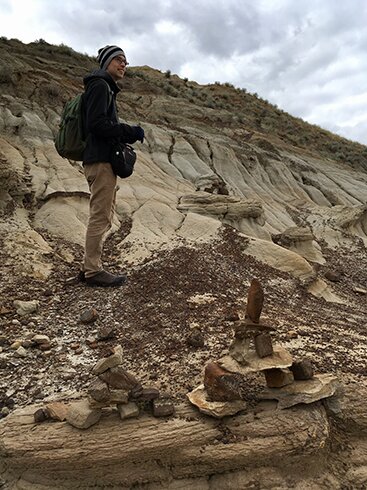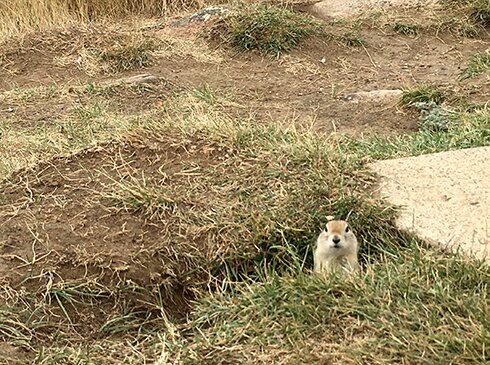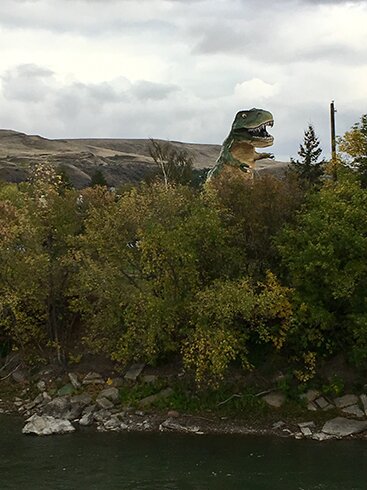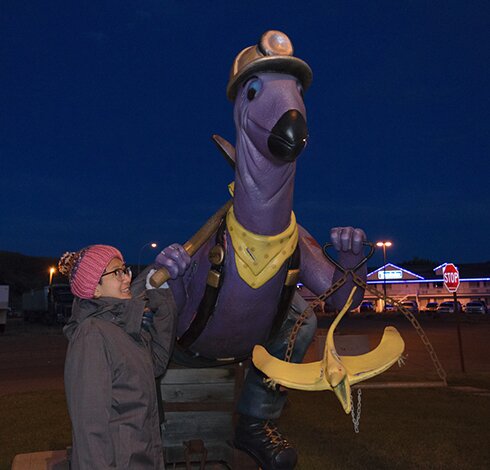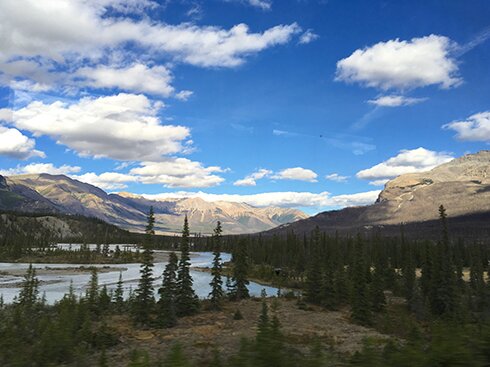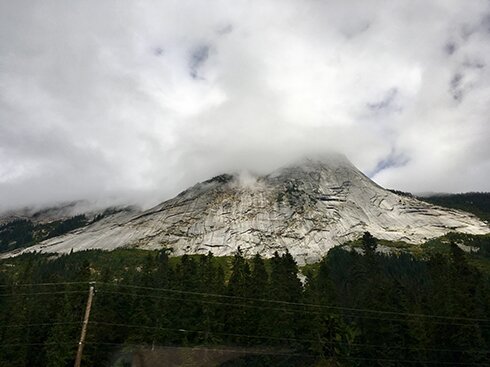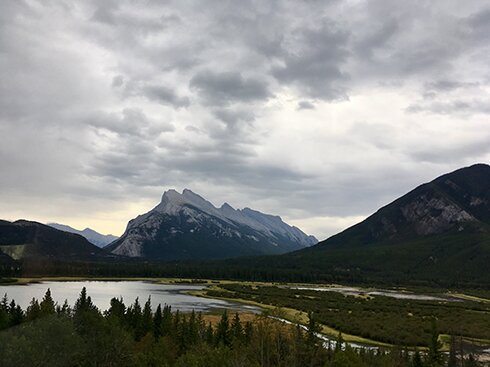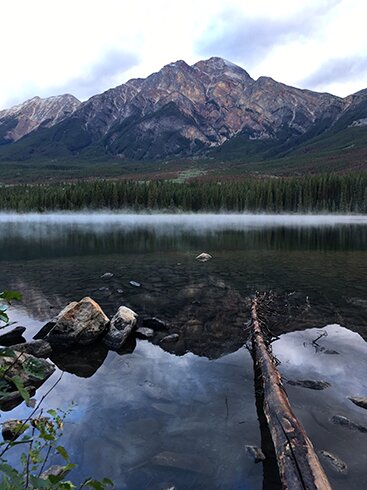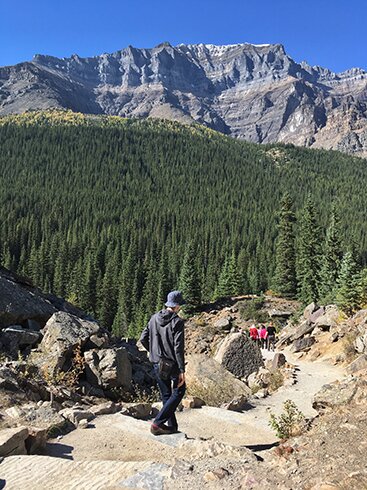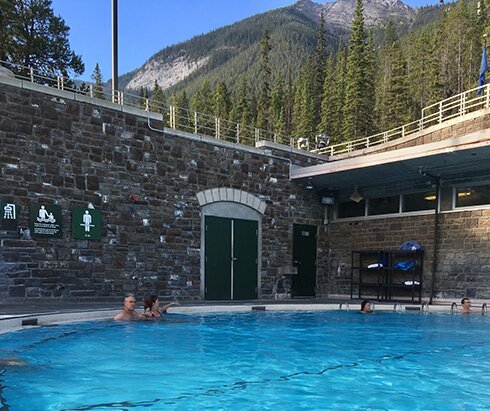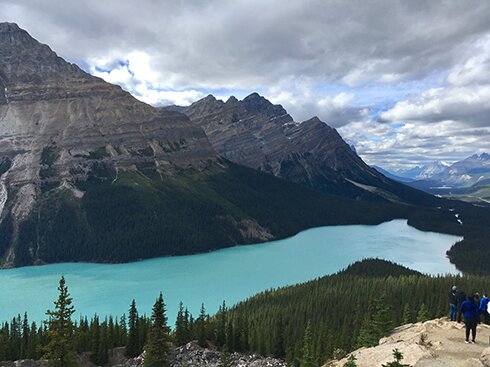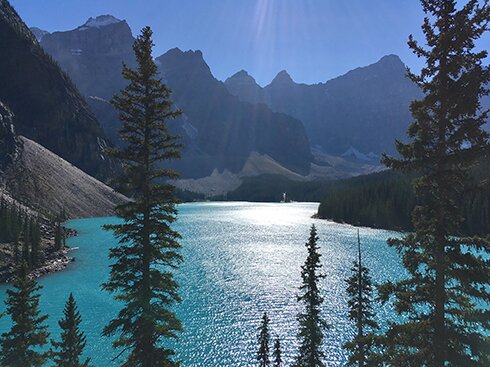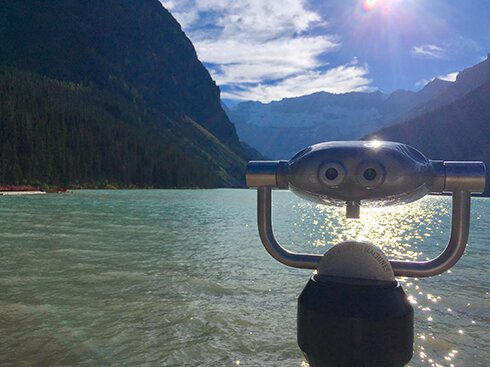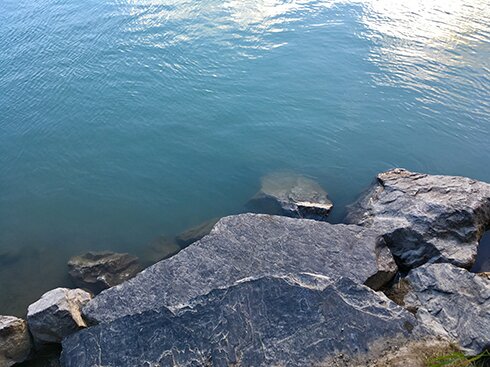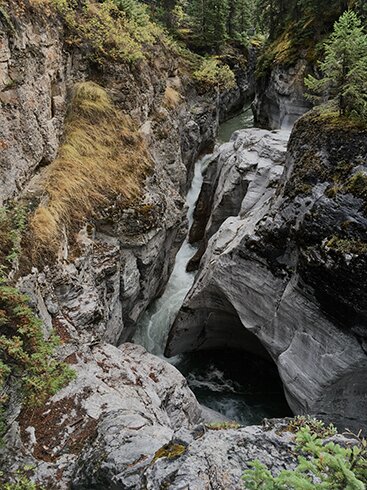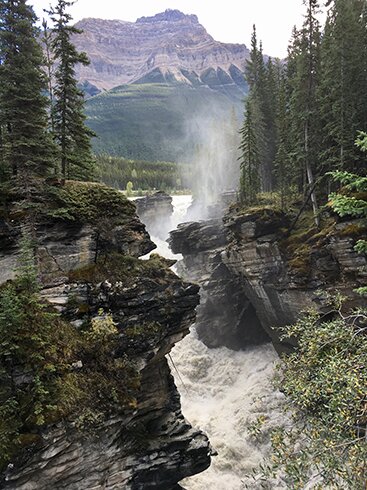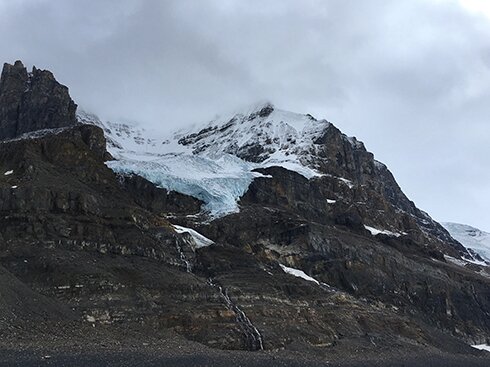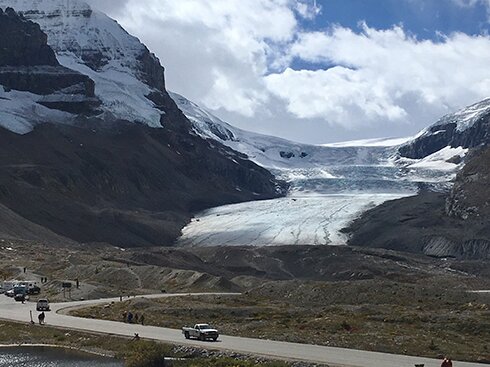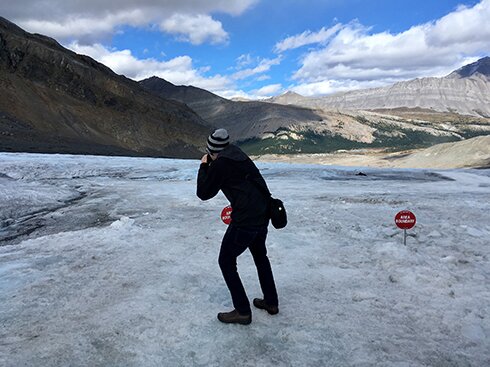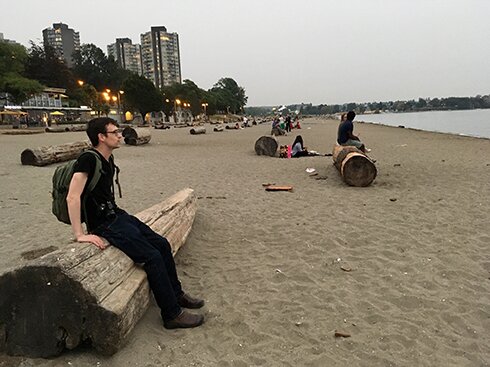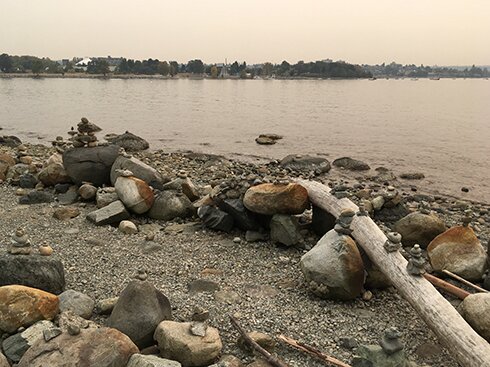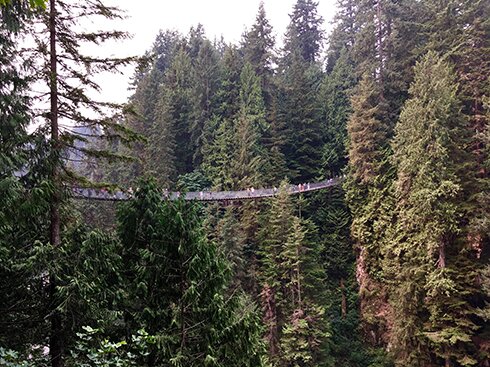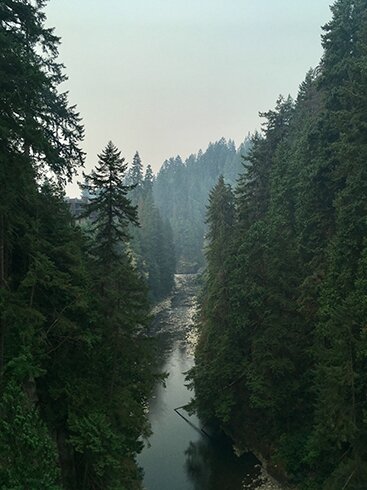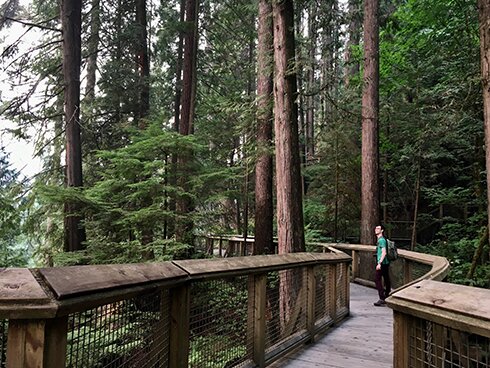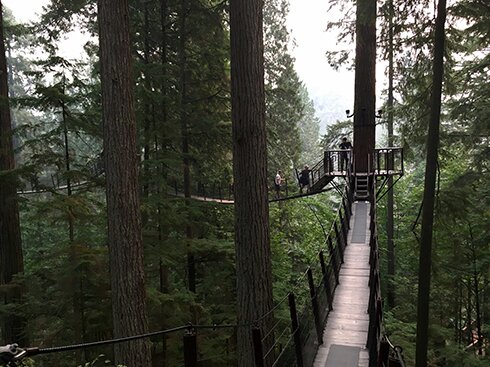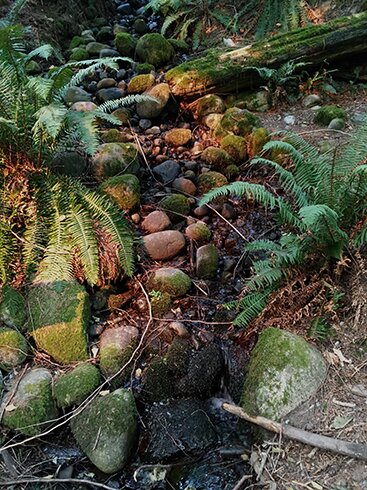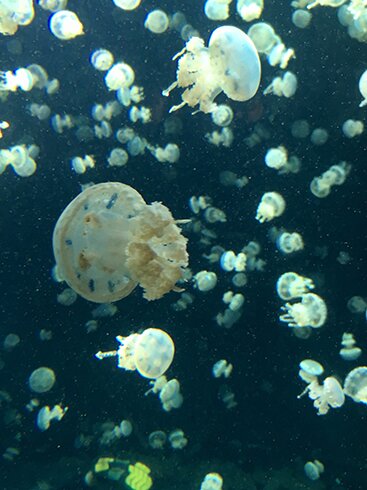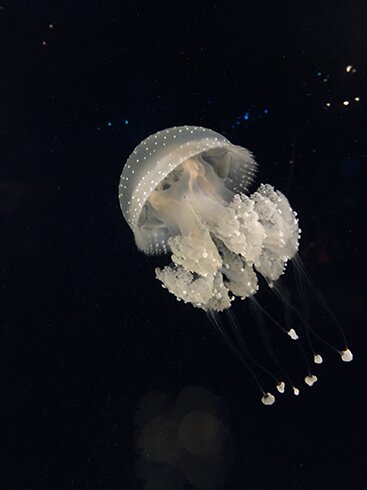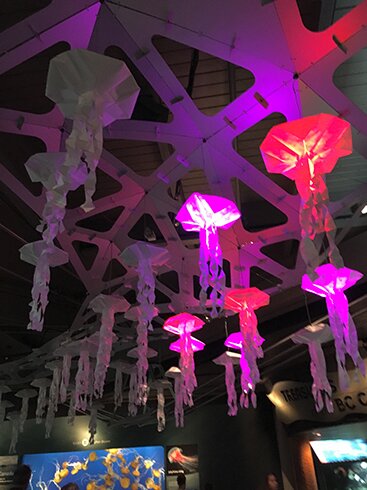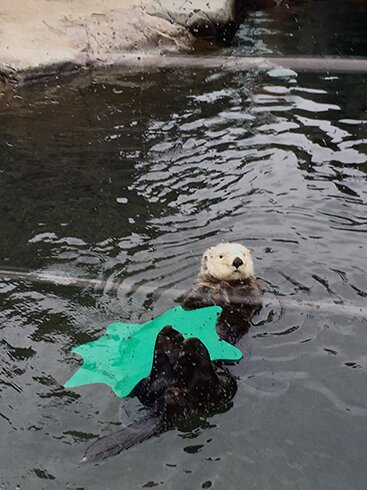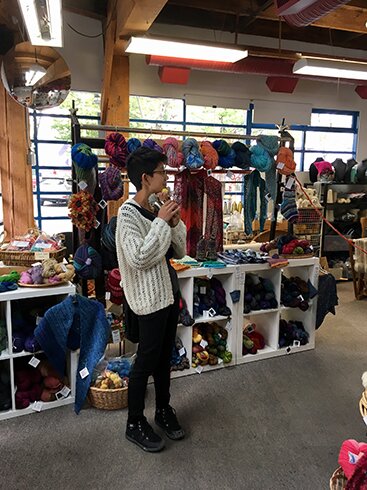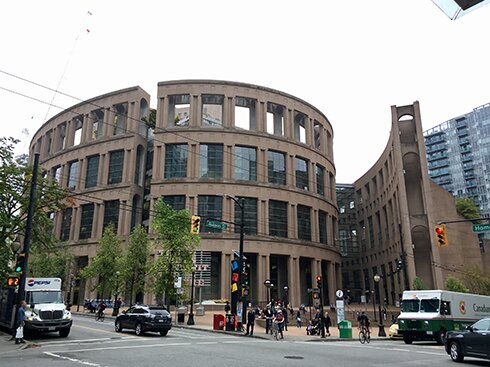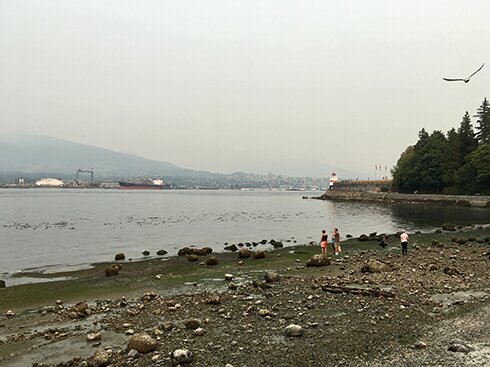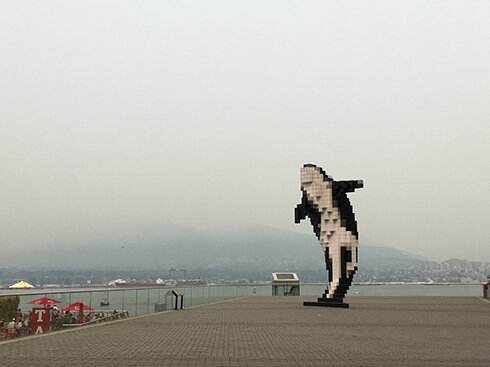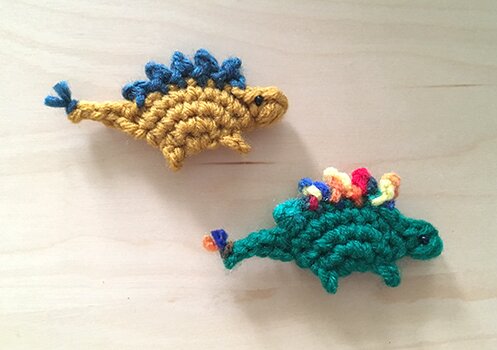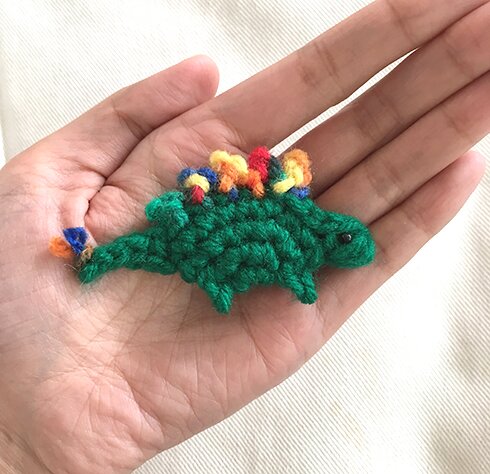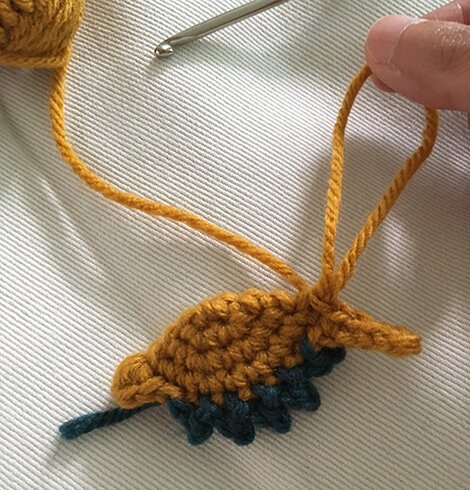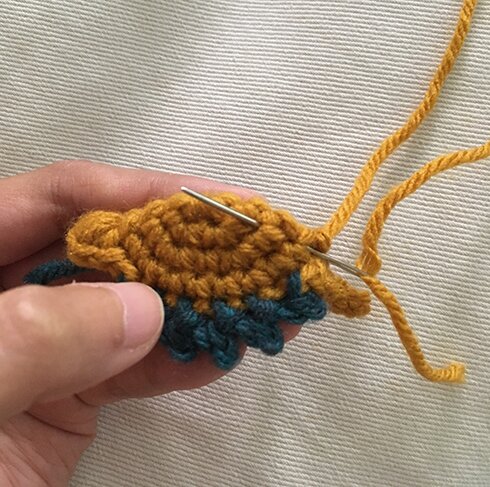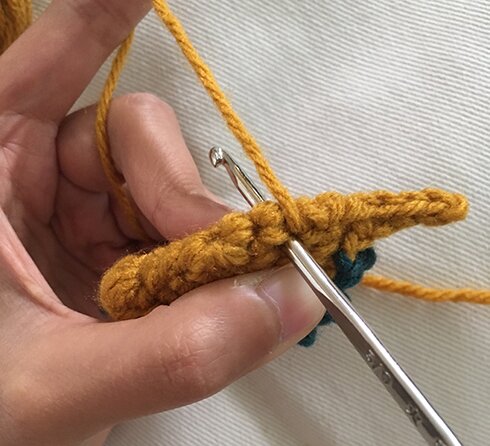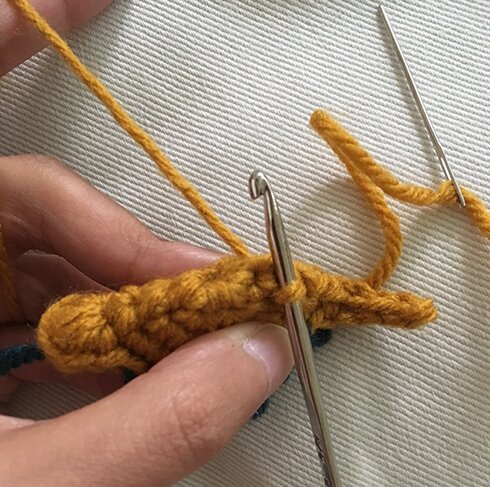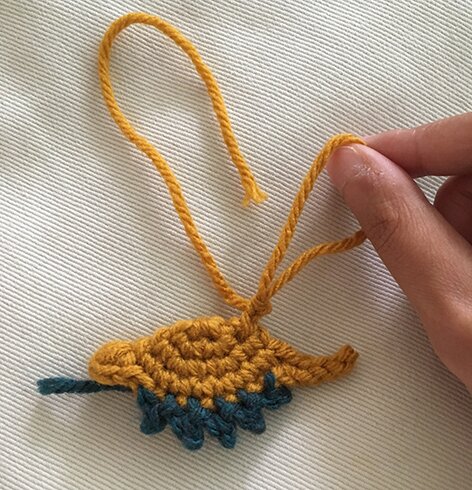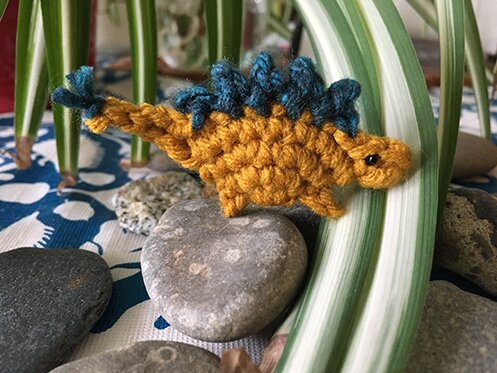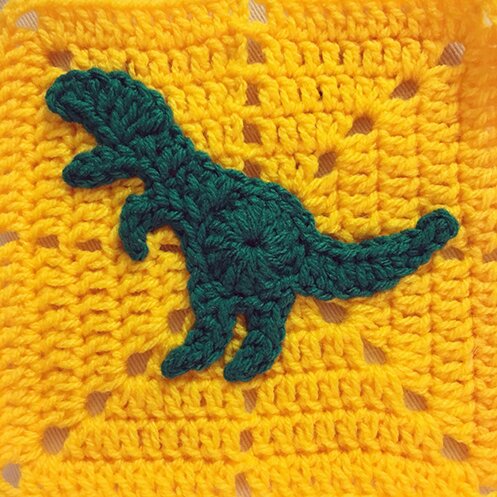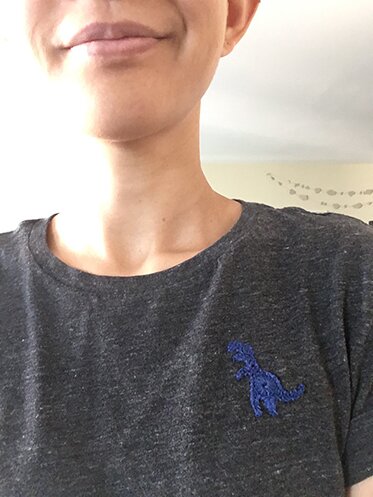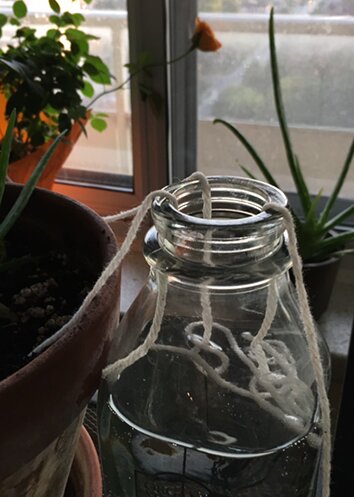It’s so hard to leave!! :’(
The badlands has become one of my favourite places on earth (granted that I haven’t been to many places on earth, but still). Drumheller, particularly, has the friendliest people (and creatures, as you’ll see) and the most beautiful landscapes.
But let’s backtrack a bit, because I don’t want to leave out Calgary! We were only going to pick up a rental car, but thought since we’re half way across the country, we should at least walk around a bit. We saw a few of the many pieces of wonderful public art installations in the city, and really appreciated the free stretch of CTrain that brought us from one end of downtown to the other. Imagine if we have this in Toronto! It would be one less barrier for people to get to helpful resources and appointments.
When we approached Drumheller on the highway (it was maybe a few kilometers away), it looked like this, which pretty much looked the same the whole way we drove through the Prairies from Calgary.
We left Calgary a bit later than planned, so it was just about dinner time, and I was looking forward to settling in with some fries and burger. Or maybe pasta. Or even just soup.
“It says it has 8000 people,” I said to Mike.
“Yes,” said Mike, eyes on the road.
“It says it has an A&W,” I looked at him, starting to panic. “Where ARE all the people?” and the food? Are we lost?!
“The sign says Drumheller,” said Mike.
And then there it was.
Driving into the valley, for someone who has never been to the valley, was quite a mind-blowing experience. It wasn’t just driving into the valley, it was like dropping into a completely different planet.
The landscape was at once alien and mesmerizing, formed by millions of years of rich history. There’s so much to explore!
1) The Hoodoos!
A variation of the word “voodoo”, so named because of their ghostly appearance and they were thought to possess supernatural powers. We first visited the Hoodoo Trail on a rainy day, so we mostly stayed on constructed paths and platforms, because the bentonite clay, which covers much of the badlands, was very slippery to walk on when wet. (more on that later!)
Hoodoos are formations of sandstone with a capstone on top that protects the pillar underneath from erosion. They’re quite phenomenal. Someone described them as mushrooms that appear over thousands of years in the badlands, which makes them all the more special to me :)
We couldn’t help but returned for a second visit at sunrise, just before we left Drumheller.
Because it wasn’t raining, we were able to get closer to these majestic, sculptural forms.
2) The East Coulee School Museum!
The valley was a tropical area millions of years ago rich with plant life and dinosaurs, which means that it then also has a high concentration of coal, from the fossils. Many towns in the region were built during the coal rush, East Coulee was one of these towns. According to the very friendly museum staff, at its height the town has a population of over 3000, but after demands for coal diminished in the 70s, population decreased to 160 currently, and the school, where the miners’ children attended, became a museum and provincial historic site.
The museum is a treasure trove of artifacts and stories. Many of the original structures and furnishing were kept (like child-size washroom stalls and drinking fountains, separate entrances for boys and girls, playground equipment and these compact desks!), and there are many pictures I could show you, but I’d leave it for you to explore yourself if you visit! :D Do chat with the museum staff about a tour of the basement and encounters of the supernatural kind if you’re a brave soul :S But if you’re like me, you’d probably prefer stories of the historical kind, found at one end of the hallway in a collection of photographs and quotes from miners about life and work in the valley, and in the diaries on each student’s desk (about what they had for lunch on a day in 1938). And don’t forget to visit the tea room for a pot of tea and treats!
Not far from the school museum is the Atlas Coal Mine, the last to close in 1979, and now also a museum! The tipple is the last structure of its kind in Canada. I found it both awe-inspiring and a bit menacing, and really felt that my life is quite comfortable compared to the way it was.
We spent quite a bit of time exploring the grounds because we had a lot of time before our scheduled train tour and because there was a lot to see and take interesting pictures of. Abandoned trains and cars and weathered buildings against the backdrop of the badlands were an aspiring photographer’s dream. And we were lucky enough to run into Raindrop, or Lady Wildfire, Atlas’ super affectionate resident cat!
We were watching a video in one of the exhibit rooms, other visitors started walking by and smiling at us, thinking that we brought our cat on the trip, and now settling in, in front of the TV, with the cat in our laps. “How cute,” one woman said. “It’s not our cat,” I said. “Oh! Can I pet it?” the woman exclaimed. Then Raindrop ran away :(
We did see Raindrop a few more times when we were on the train tour, I think she was roaming the grounds :) The friendly museum staff shared some interesting stories of life in the coal mine, and we even got to meet a man who worked at the Atlas mine since he was 14, and he told a few stories as well! We were very lucky indeed :D
It is the only business left in the coal town, Wayne. A fun place to stop for lunch after touring the museums. Lots to see while waiting for food!
I’ve been looking forward to visiting this museum of paleontology since forever! I’ve never seen specimens so amazing.
There has actually been a lot of press about this nodosaur. It is so well preserved, you can see the texture of its skin. To see it with my own eyes rather than a picture on the screen is a remarkable experience.
We took a hiking tour led by a museum staff in the Midland Provincial Park, which is right next to the museum.
Here I took some close up pictures of the plants in the badlands. The flower of this plant is just a couple of millimeters across.
And this is a super macro picture of bentonite clay! Which is formed from volcanic ash, and would puff up and become more slippery than soap when wet, making the badlands difficult to travel through on rainy days.
6) Hiking in the canyons!
I consulted with this website before going to the Horseshoe Canyon for a sunrise hike (for good pictures) and was expecting easy paths, but was sad to see that the wooden paths and staircases have all been torn down, without any signage explaining what was going on. So we ventured down (a steep hill! coming back up was quite a workout) and carefully walked around in a small area, it was worth the climb!
We then drove back on South Dinosaur Trail and stopped at Orkney Lookout to view the Red Deer River, which was highly recommended by the friendly school museum staff. It was magnificent indeed!
We then crossed back to the North Dinosaur Trail by taking the Bleriot Ferry, which was kind of like a section of a road that shifts from one shore of the Red Deer River to another. It was free, and the ferry staff was also very friendly. He told us a story about a Jeep that attempted to jump onto the ferry after it had departed from shore, like in the movies. It fell into the river. No one was hurt though, I think. “Never a dull moment out here,” he said :D
We then stopped at Horsethief Canyon, so named because 1) according to the Tyrrell Museum staff, people who stole horses would hide in this canyon and then accidentally fell into sink holes (to warn us about the danger of hidden sink holes when walking in the badlands) or 2) according to the plaque at the canyon, horses would wander into the canyon, disappear for a while, and come out carrying different branding. Either way, it was breathtakingly beautiful from the lookout point.
We found a way to hike down, and even found some inukshuks! Mike made his own to add to the group :)
And we kept running into this ground squirrel, who tapped Mike’s hand with his paws! Mike insisted that he was hugged by the squirrel. And I thought, I really liked hiking in the badlands, there’re no bears, or coyotes, just friendly ground squirrels :) (I think maybe there are rattle snakes, but we didn’t see any :S)
7) Dinos, dinos, dinos
From the World’s Biggest Dinosaur to the dozens of fun dinosaur sculptures in town :D
This is my favourite shot of the World’s Biggest Dinosaur, across from the Red Deer River, all menacing, like it’s in its own natural habitat :D
And this is my favourite of all the pictures we took with the friendly dinosaur sculptures, Mike spent quite a bit of time getting the lighting perfect :)
We were very sad to leave, as you may guess :’( Difficult as it was, we drove out of the valley for the last time, hoping that we will return one day.
And on our way back to Calgary for the flight home, we took a very short side trip to the Village of Beiseker, to visit the world’s largest skunk! Its name is Squirt. It was on a campground, and at its foot a Saturday morning game of horseshoes was going on, and a very friendly woman took this picture of us :D
Thus concludes our wild west adventures! Thank you for virtually journeying with us, I hope you enjoy the pictures, and if you haven’t visited these wonderful places, especially the Canadian Badlands, I hope you will one day! :D
